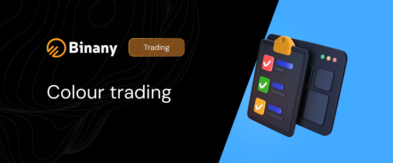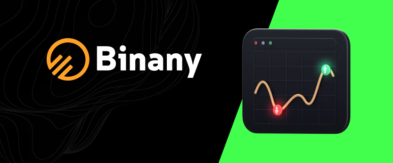Rate of Change Indicator: All You Have To Know about ROC
The Rate of Change (ROC) is a widely used momentum-based analysis tool. It is a tool for traders to measure the percentage change in price over a certain period of time. ROC measures the speed, and direction of price movement and helps identify trends, reversals, and overall market momentum. It confirms price trends and helps dealers in their business. In volatile markets, this indicator is especially useful. In such markets, changing momentum can create special opportunities to trade.

Indian traders use the marker to make better decisions in Forex, stocks, and cryptocurrencies. Vendors use it as a core component of their technical analysis strategies.

ROC Indicator
For traders who want to measure the momentum of price movements over a period of time, the Rate of Change indicator is an important tool. The tool calculates the difference between the current price and the past prices as a percentage. It helps dealers to indicate the strength of the market and see where it’s heading. The indicator also helps determine whether an asset is gaining or losing momentum, which can impact trading decisions. Here are some of the key points to keep in mind when working with this blinker:
- Measuring momentum. It quantifies the rate at which an asset price changes.
- Trend identification. Traders use it to identify bullish or bearish market trends.
- Reversal detection. A sudden change in the value can be a sign of a possible price reversal.
- Applicability to different markets. Indian vendors use the index in stock, forex, and cryptocurrency trading.
Traders widely use the Rate of Change due to its simplicity. However, it works best when it is combined with other technical indicators. This way, the indicator better confirms signals and does not give false estimates. Traders should also consider the analysis time. Short-term dealers can use a 9-day marker. Long-term investors may prefer a 25-day or 50-day pointer to analyze the trend better.
ROC Formula
To use the Rate of Change indicator effectively, sellers must understand its formula and calculation. The formula is as follows:
To calculate the ROC values, follow these steps:
- Select a time period. Determine the number of periods (e.g. 10, 14, or 25 days) depending on your trading strategy.
- Find the price. Find the closing price n periods ago.
- Find today’s close. Record the most recent close.
- Apply the formula. Subtract the past close from today’s close, divide by the past close, and multiply by 100.
- Interpret the results. A positive marker is an indication of upward momentum, and negative flag is an indication of downward momentum.
This simple calculation allows sellers to gauge the speed of price movement. This formula helps traders time their trades more efficiently.
How to interpret the rate of change
To use the indicator effectively, every trader should understand the meanings of the rate of change:
- Positive. Indicates upward momentum. Here the asset is gaining strength.
- Negative. Implies downward momentum. It signals that the asset is weakening.
- Extremes. When the marker reaches high positive or negative levels, the asset may be overbought or oversold, respectively.
- Zero line crossover. A move from negative to positive may signal a buying opportunity and vice versa.
Analyzing the ROC in different market conditions helps brokers make more informed decisions and reduce potential risks.
Price Rate of Change Indicator
The Price Rate of Change indicator is a special tool for price momentum analysis. It allows traders to assess how quickly an asset’s price is changing over a given period. This allows for more accurate exit and entry points.
You can calculate The PROC indicator with such formula:
PROC = [(Current Price – Price n periods ago) / Price n periods ago)] x 100.
The percentage change in price can be determined by this calculation. Thanks to the PROC, you can identify trend strength and reversals.
Here are some important insights you can glean from the PROC indicator:
- High PROC. Indicates strong price momentum and a possible continuation of the current trend.
- Low PROC. Indicates weak momentum, which may lead to consolidation or a reversal in price.
- Other indicators. You can use ROC in conjunction with moving averages (SMA, EMA) or RSI to provide more accurate signals.
Thus, PROC monitoring allows brokers to understand market dynamics better and optimize their trading strategy.
How to Use Rate of Change Indicator
Before starting to work, every novice trader should familiarize themselves with the basic principles of this tool. Study them in more detail below.
Identifying Market Trends
It is a trend analysis tool. It helps traders identify trends. Let’s look at the basics:
- Bullish trend. If the index is positive and rising, it confirms an uptrend.
- Bearish trend. If the marker is negative and falling, it indicates a downtrend.
- Trend confirmation. You can use the instrument with a trend line or moving averages to check the validity of the current move.
As you can see, the marker helps traders not only detect new trends but also assess their sustainability.
Overbought and Oversold Signals
ROC is also a useful tool for identifying possible reversals. It identifies overbought and oversold zones. Let’s look at their main features:
- Overbought signal. It may indicate that the asset is overbought if the index reaches extremely high levels. In this case, a corrective pullback is possible downwards.
- Oversold signal. If the pointer reaches very low values, it indicates an oversold market. This may cause prices to rise.
- Confirmation of reversals. Traders often combine the index with RSI or Bollinger Bands to reduce the false signals.
ROC in work with other indicators helps to avoid mistakes in trading.
Divergences and Crossovers
Divergences and zero-line crossovers are some of the most powerful signals that you can obtain. Consider them below:
- Divergence. If the price and the indicator are moving in opposite directions, this may signal an imminent trend reversal.
- Zero line crossover. If the crossover is above zero, this confirms bullish momentum. If the crossover is below zero, this confirms the bearish side.
- Combination with other indicators. A lot of traders combine it with MACD or other tools to confirm signals.
Thus, ROC can be effectively used to determine the current trend and to predict future price movements.
Advantages of the ROC Indicator
The indicator is an extremely valuable tool for Indian traders. It offers a simple approach to identify momentum shifts. The tool works across asset classes such as stocks, forex, and crypto. Check out the key benefits below:
- Easy to calculate and interpret. The indicator is easy to calculate. It only requires the percentage change between the current and the past prices over a set period. Traders can quickly assess whether the momentum is increasing or decreasing. A positive ROC indicates bullish momentum, while a negative one indicates bearish pressure.
- Versatility across asset classes. The indicator works well across multiple financial instruments. This makes it suitable for Indian traders who trade forex, stocks, and crypto markets. It helps identify potential breakout or reversal points for those who analyze NSE stocks, INR currency pairs, or digital assets.
- Effective for trend confirmation. ROC complements other indicators to confirm a trend. When it is aligned with price action, traders are more confident in their business.
- Useful for spotting conditions. Extreme values can show market overextension. The tool provides entry or exit opportunities.
Due to its simplicity, the indicator remains a popular choice for Indian traders who want to improve their strategies. In addition, the Binany platform allows traders to customize the ROC period settings. This way, you can adapt your trading process to different market conditions. Such settings will help you make more accurate decisions.
Limitations of the ROC Indicator
The indicator has limitations that traders in India should know about. This knowledge will help traders better analyze the indicator’s capabilities before relying solely on it for trading. Let’s look at the main limitations in more detail:
- False signals in range-bound markets. One of the biggest drawbacks of the indicator is its tendency to generate false signals in sideways or range-bound markets. When an asset is trading in a narrow range, the ROC fluctuates and does not provide clear trends. This can lead to unreliable buy and sell signals. Thus, traders may enter or exit positions prematurely.
- Reliance on other tools. The ROC is an effective tool, however, it lacks predictive power. It does not take into account market trends and other key features. Traders often combine the ROC with the Rock Curve to filter out false signals. As you can see, trading only on the ROC can be risky.
- Ultimately delays. Like many momentum indicators, the ROC can sometimes lag behind price action, especially during sudden market reversals. This can result in delayed entries or exits and impact profitability.
Despite these limitations, the indicator remains a valuable tool that can work well with a well-thought-out trading strategy. To minimize these limitations, traders in Indian markets should adjust the period settings depending on market conditions. A shorter time period makes the indicator more sensitive but increases the number of false signals and vice versa.
Traders can also use the Binany demo account to test some of the main settings. Traders can increase the accuracy of signals and reduce risks by integrating ROC with moving averages, RSI, or Bollinger Bands. A disciplined approach and smart money management will help you improve your results.
Rate of Change Indicator: How to Get Started
If you are trading on Binany, follow this step-by-step guide to effectively set up and use the indicator:
- Log in to our Binany account. Open the Binany trading platform on your PC or smartphone. Log in or create an account.
- Select your trading asset. Select an asset such as forex, crypto or stocks from the available markets on the platform.
- Open the charting tools. Click on the charting section and select the technical indicators menu.
- Find and add the ROC indicator. Find the ROC on the list of indicators. Select it and adjust the period parameters (usually 14 days by default).
- Analyze the values. Positive values indicate bullish momentum. Negative values indicate bearish momentum.
- Use ROC with other indicators. Combine the index with moving averages or RSI to filter out false signals.
That’s it! Now you can effectively integrate the index into your Binany trading strategy. This guide will help you make your trading more successful.
Binany also offers customization options for the ROC. The platform allows traders to adjust the period settings depending on their strategy. Shorter periods make the indicator a way more sensitive. Longer periods help filter out short-term noise. Additionally, Binany’s real-time charts allow traders to accurately track ROC movements and make better decisions.
The platform’s interface makes it smooth to switch between timeframes and assets. Binany’s advanced charting tools and indicators help traders refine their strategies and increase their profit potential.
Conclusion
The ROC indicator is a valuable tool for traders. The simplicity and versatility of the tool make it useful across a variety of asset classes. However, relying solely on the ROC can result in false signals. Traders should combine the ROC with other indicators and strategies, such as stop-loss and position sizing. Start practicing with the ROC on your trading platform today!
FAQ
What is ROC in Stock Market?
ROC in the stock market is a momentum indicator that measures the percentage change in an asset’s price over a given period. It helps traders gauge whether a stock is gaining or losing momentum. Traders use it to spot trends, potential reversals, and more.
What is Rate of Change?
ROC refers to the speed at which a value changes over time. Traders use ROC in technical analysis to measure momentum and identify trading opportunities.
What is Rate of Change Indicator?
The ROC indicator is an analysis tool. It calculates the percentage change in the price of an asset over a selected period. Traders use it in stocks, forex, and crypto trading. However, you should combine ROC with other indicators to improve accuracy.

Financial writer and market analyst with a passion for simplifying complex trading concepts. He specializes in creating educational content that empowers readers to make informed investment decisions.



